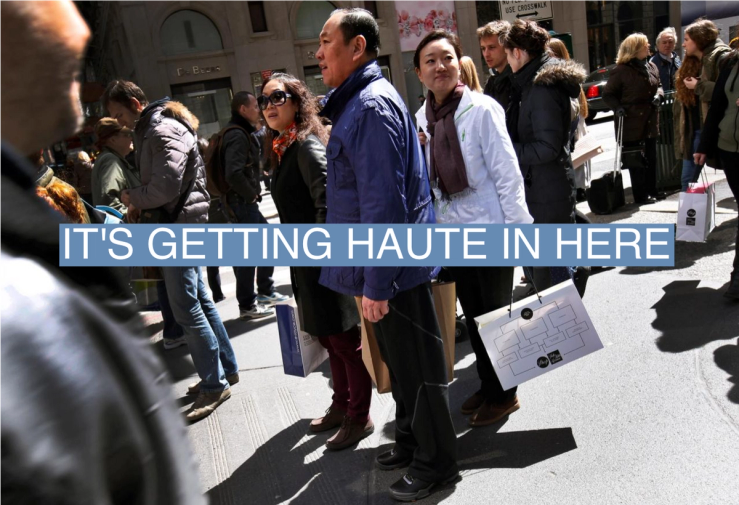The News
Luxury spending in China is bouncing back faster than the country’s overall economy, according to McKinsey and a 2024 report from The Business of Fashion.
The projected 4-6% growth is higher than what forecasters are predicting for the U.S. and Europe, with most Chinese luxury spending taking place domestically as travel outside China remains more difficult than it was pre-pandemic.
SIGNALS
China’s luxury market is double the size it was in 2019
Though China’s economic growth in 2023 was at one of its lowest levels in decades, the country’s domestic luxury market is almost double the size it was in 2019, thanks, in part, to an uptick in nationwide travel and shopping. Before COVID, 60% of Chinese luxury purchases were made overseas, while the remainder was local, according to The Business of Fashion. Now, domestic shopping accounts for 60 to 70% of the country’s spend — what the State of Fashion report forecasts will be a “permanent repatriation of luxury spend.”
Domestic travel to Hainan Island, China’s duty-free enclave, played an especially key role in boosting the country’s luxury transactions, though experts say this trend is somewhat surprising. “There was a question, right? What happens when the borders are open again — will Chinese still go to Hainan or will they all just drop back to Hong Kong?” one Shanghai-based McKinsey official said.
Post-pandemic travel challenges make Chinese luxury shoppers spend domestically
Steep import taxes mean that the prices of luxury goods in the mainland are still higher than abroad, but even if locals want to travel to shop, flying outside China remains far more difficult than it was before COVID. Embassies across the country have not returned to normal staffing numbers to meet sudden “exploding demand” for international travel, the CEO of the World Travel and Tourism Council (WTTC) told Bloomberg. Airfares are also higher because of soaring fuel costs for foreign carriers, which are no longer able to fly across Russian airspace due to the Ukraine war. The long-term outlook for travel outside China is positive though, the WTTC predicts, as the country is expected to overtake the U.S. as the world’s largest travel and tourism market in the next decade.
China’s wealthiest are reviving the ‘old-money aesthetic’ of less flashy products
China’s growth in luxury spending “is mostly likely to be sustained by mature shoppers reviving the ‘old-money’ aesthetic of understated elegance and products with minimal logos,” Vogue Business reported in October. China’s wealthiest consumers seem to prefer “less ostentatious displays of status” amid the country’s flagging economy, and in line with the government’s goal of achieving “common prosperity,” the report stated. In Vogue’s survey of China’s luxury shoppers, 47% said they are concerned about the economy, suggesting a decreased appetite for clothing with flashy, visible logos. The report noted, however, that there is still a subset of younger, “aspirational shoppers” who drove the post-lockdown surge with bolder choices — opting for clothing, handbags, and jewelry that help them stand out.



